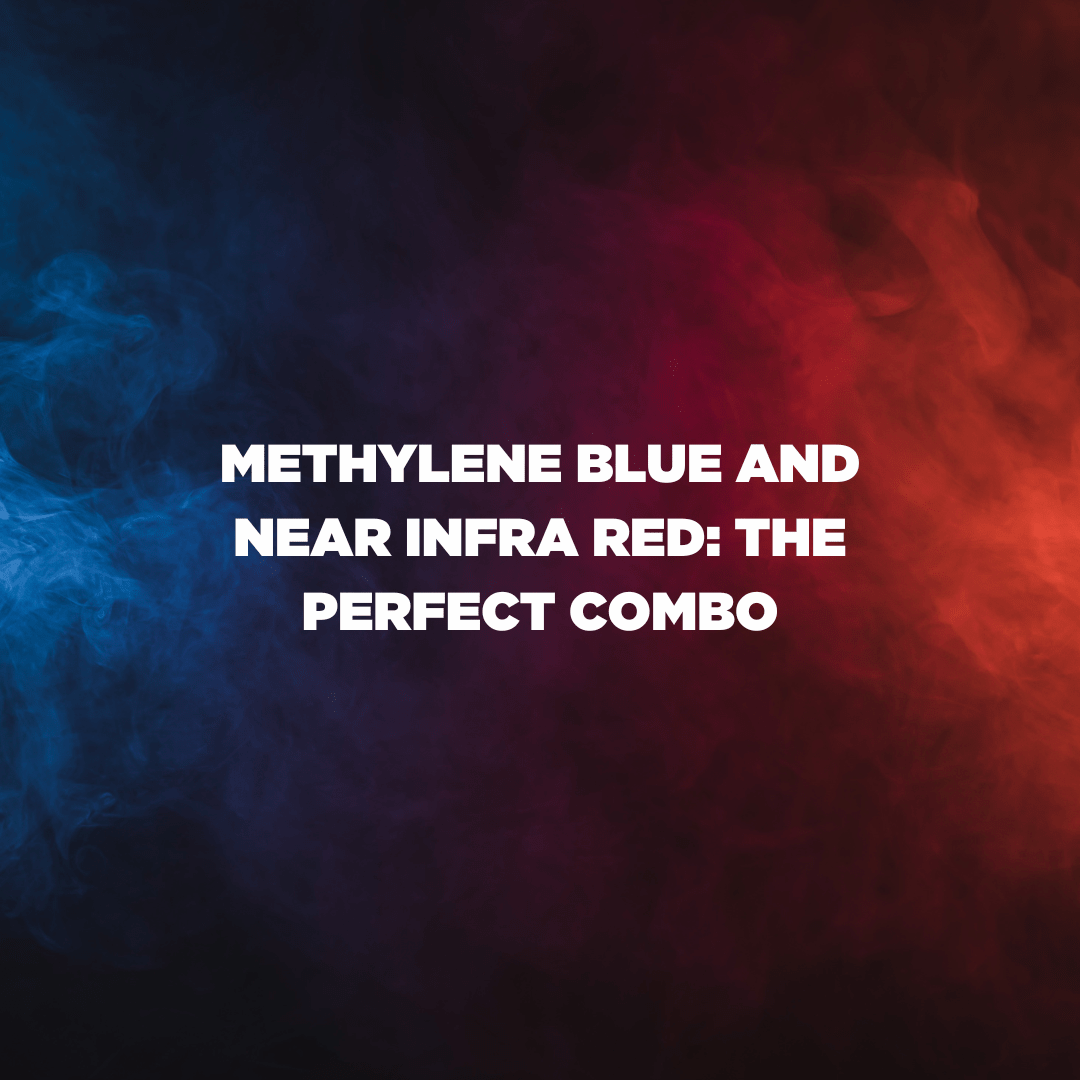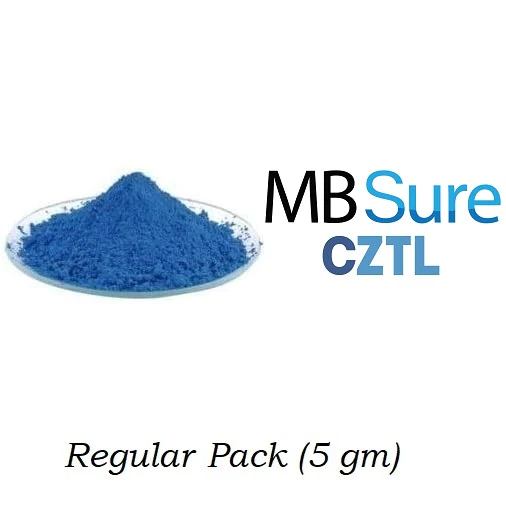Methylene Blue And Near Infra Red
You might also like to read:
Neurons are metabolically protected against degeneration using low-level methylene blue and near-infrared light interventions (1)
What Is Methylene Blue (MB)?
Methylene blue (MB) is considered to be the first synthetic medication ever used in humans (1).
It is an FDA-approved medication which has been used as an effective agent in malaria treatment, methemoglobinemia, and cyanide poisoning (8) but has more recently been discussed as a potential way to reduce risk of Alzheimer’s, support mitochondrial function, thyroid function, viral infections, cognitive function among other things.
Methylene Blue And Near Infra Red: The Perfect Combo
Neurons are protected against degeneration using low-level methylene blue and near-infrared light interventions. Both of these interventions act by a cellular mechanism involving enhancement of the electron transport chain in mitochondria, which promotes energy metabolism and neuronal survival.
Methylene blue preferentially enters neuronal mitochondria after systemic administration.
Low-level near-infrared light applied transcranially delivers photons to cortical neurons that are accepted by a specific protein complex in the mitochondria, which causes increased cell respiration and cerebral blood flow (1).
Breakthrough in vivo studies with these interventions suggest that targeting mitochondrial respiration may be beneficial for protection against different types of neurodegenerative disorders.
The authors of this paper provide an update on the cellular mechanisms mediating the neuroprotective effects of low doses of methylene blue and near-infrared light, and to argue that the neurotherapeutic benefits of these two different interventions share the same cellular mechanism of action based on stimulation of mitochondrial respiration.
Near Infra Red Light
This type of luminous energy can enter brain mitochondria transcranially, and—independently of the electrons derived from food substrates—it can directly photostimulate cytochrome oxidase activity (1).
Near-infrared light stimulates mitochondrial respiration by donating photons that are absorbed by cytochrome oxidase. Photons are packets of luminous energy from electromagnetic waves. The amount of energy delivered by a photon depends on the light wave frequency. Photons in the red-to-near-infrared frequency range of approximately 620–1150 nm penetrate to the brain and intersect with the absorption spectrum of cytochrome oxidase (1).
The absorption of luminous energy by the enzyme results in increased brain cytochrome oxidase enzymatic activity and oxygen consumption. Since the enzymatic reaction catalyzed by cytochrome oxidase is the reduction of oxygen to water, acceleration of cytochrome oxidase catalytic activity directly causes an increase in cellular oxygen consumption.
Because increased oxygen consumption by nerve cells is coupled to oxidative phosphorylation, ATP (energy) production increases as a consequence of the metabolic action of near-infrared light (1).
Methylene Blue as Electron Donor
Low-dose methylene blue stimulates mitochondrial respiration by donating electrons to the electron transport chain (1). Methylene blue is unique among chemicals for several important reasons. Foremost is the auto oxidizing property that allows methylene blue at low concentrations to form a redox equilibrium by serving as both an electron donor and acceptor.
This property permits the cycling of electrons from chemicals inside the mitochondrial matrix to electron transport proteins in mitochondria.
These transport proteins act as acceptors for electrons donated by methylene blue in mitochondria.
The final acceptor of electrons in the respiratory chain is oxygen, which is obtained from oxyhemoglobin transported in the circulation. Molecular oxygen becomes reduced to water in a reaction catalysed by protein complex in our mitochondria (1).
The electron transport chain is coupled with the biochemical process of oxidative phosphorylation, which leads to increased oxygen consumption and the formation of ATP from ADP. Under normal physiological conditions the electrons that enter the electron transport chain come from electron donor molecules such as NADH and FADH2. These molecules derive from the food we eat (1).
Methylene blue at low concentrations serves as another source of electrons [the other source being from our food] for the electron transport chain that is part of mitochondrial respiration, leading to increased cytochrome oxidase activity and oxygen consumption. (1)
This is why methylene blue and near infra red are the perfect combo.
Alex is a certified Functional Medicine Practitioner (IFMCP) and has a MSc in Personalised Nutrition. He is also a breathwork facilitator with a background in personal training and massage therapy. He also runs The Resiliency Program - a 24 week program aimed at building physical, mental, emotional, and spiritual resilience.






